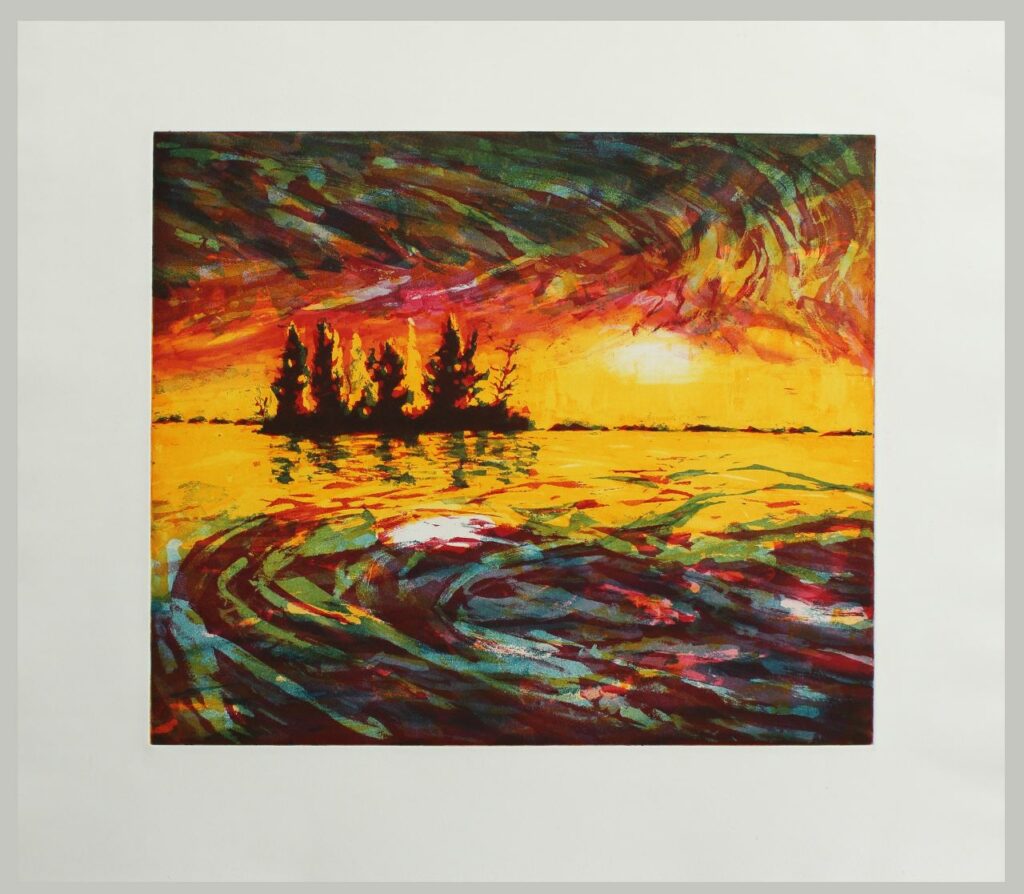
When late afternoon arrives, the twilight (or dusk) – the moment where daylight is mistaken for night light – brings a range of different colours. Each sunset is unique, it immerses the landscape in a specific light and enchants at the same time, confusing our gaze. This feeling makes the few minutes of sunset extended, for inconvenience and beauty, changing our perception of time.
“Twilight” is where the artist recalls exactly the differences and similarities of all days, all landscapes. It is to evidence in art how this particular light floods our memory and how our memory reproduces it. What Felipe presents appear to be the record of those times, cataloguing the lifted palette from the memory of that light and from that time of specific suspension. No wonder why the titles of his works are not given names, but numbers, the creation of a landscape inventory, none precisely real, registered by the artist, but likely to exist.
Hills, wetlands and vegetation are lined in the artist´s prints in order to set up an iconographic passage of the landscape, floating between the romantic landscape whirlwind and metaphysics between William Turner and Giorgio de Chirico. There is no record in the print; these prints are efforts to lift the landscape to the inaccurate universe of memory. It is to remember specific lights, places that belong to us even if we have never visited them. It is the conflict of the landscape, mediated by the universe of impressions and sensations that comes from a common imaginary of the landscape construction, and the notion of its representation in art history.
His prints appear as memory itself, some harder and precise, others more soft and fluid. There is no right way; there is a certain dislocation, evidenced by the artist in small mismatches, where the skyline is no longer aligned. That is what highlights the artist´s construction, or wants so, and even without being sure that those landscapes exist, he makes them to exist. It is as if they were emerging from the mist, taking shape from the desire of being eternal and physical, although ethereal.
However, the mastery of light and colour is what actually Felipe Góes shows us through his work. These distinct sunsets are what he wants to show, making us to understand the differences and similarities of living one day after the other, looking at a landscape after another.
Text by Douglas de Freitas
June 2016
Courtesy of Galeria Gravura Brasileira, Sao Paola, Brazil